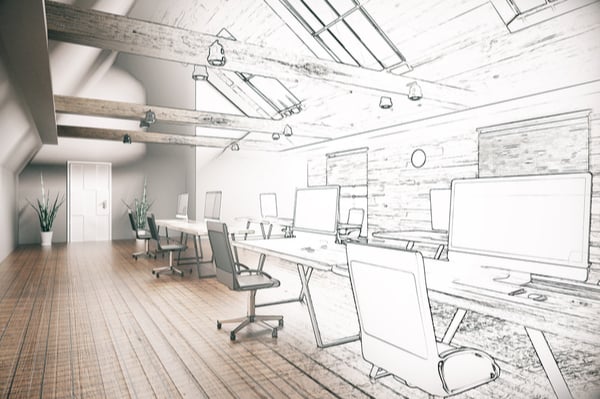What’s the perfect design for your workplace?
 UK employers are failing to design suitable workspaces that align the demands of employees and the business’ goals, according to the latest Leesman Review
UK employers are failing to design suitable workspaces that align the demands of employees and the business’ goals, according to the latest Leesman Review
Jermaine Haughton
Where you work matters.
Exacerbated by the highly-connected, multi-disciplinary and fast-paced nature of the modern working world, executives seek to utilise every inch of space available to make more money, while staff look for the best resources to hone and develop their skills.
For departmental and line managers, the organisation, layout and utility of the office is a key aspect of managing a productive, confident and high-performing team.
Yet managers are struggling to produce the best workplace design and environment for their staff, the latest edition of the quarterly journal on workplace data, The Leesman Review suggests.
The clear majority (85%) of employees believe the design of their workplace is important, but the report found only 51% of individuals agree that their current workplace is a place they are proud to bring visitors to.
Furthermore, just over half (57%) of respondents believe their workplace creates an enjoyable environment to work, with a similar proportion (58%) agreeing their workplace contributes to a sense of community at work.
Most startlingly for managers, an ineffective workplace design is reportedly hampering the bottom line, and meeting business objectives, for a significant proportion of people. In a third of UK workplaces Leesman has measured, less than 50% of respondents can agree that the design of their workplace enables them to work productively.
On a global scale, the results were a little better. Surveying more than a quarter of a million employees worldwide in 1,986 locations, The Leesman Index found that only 57% of employees credit their workplace for allowing them to work as productively as possible.
Productivity is a hot topic at present, with the current rate in the UK dropping back to pre-financial crisis level in 2008. Hourly output fell 0.5% in the first three months of the year, the Office for National Statistics (ONS) said, and business leaders, politicians and economists continue to scratch their heads to find a practical solution.
Whether you opt for an open plan office or a closed space cubicle-based office space, or anything else, managers are advised to primarily consider what resources and spaces are required for different staff members to complete their different tasks each day, said Leesman’s development director Peggie Rothe.
“How do your users perceive the environment, considering the work they do and the way they do it,” she asked. “If they are not aligned, if you’re experiencing low levels of effectiveness, ask yourself why it’s not working.
“It’s easy to assume the problems are in the workplace design, but sometimes the root cause is not the space itself, it’s how it is being used. Small unbookable rooms designed for ad hoc meetings won’t work if individual employees occupy them all day, treating them as their own private office. And phone booths won’t support conversations if they’re used as storage. Sometimes you’ll find the solution to the problems elsewhere.”
So what does the research tell us about employee needs from their office space?
Desk-based individual-focused work was deemed the most important common task according to 93% of staff, with three quarters (76%) of staff saying they are satisfied with their current workplace resources to achieve this. Planned meetings were given a 77% importance, with 79% being satisfied by the facilities they have to hold meetings in. The third highest common work activity was telephone conversations with a 76% importance rating and a satisfaction score of 64%.
By contrast, the lowest ranked work activities as judged by employees were video conferences (importance (35%), satisfaction (58%)), individual focused work away from your desk (34%, 64%) and using technical/specialist equipment or materials (25%, 65%).
Desks, chairs and meeting rooms are rated as the three most important physical features for employees, with an importance rating of 89%, 87% and 80% respectively. However, the research suggests there is room for improvement for many employers on refining these physical features, with desks only receiving a 72% satisfaction rating, compared to 67% for chairs and 52% for the standard of meeting rooms.

Press & Media Enquiries
For more information or to request interviews, contact CMI's Press Team on 020 7421 2705 or email press.office@managers.org.uk


